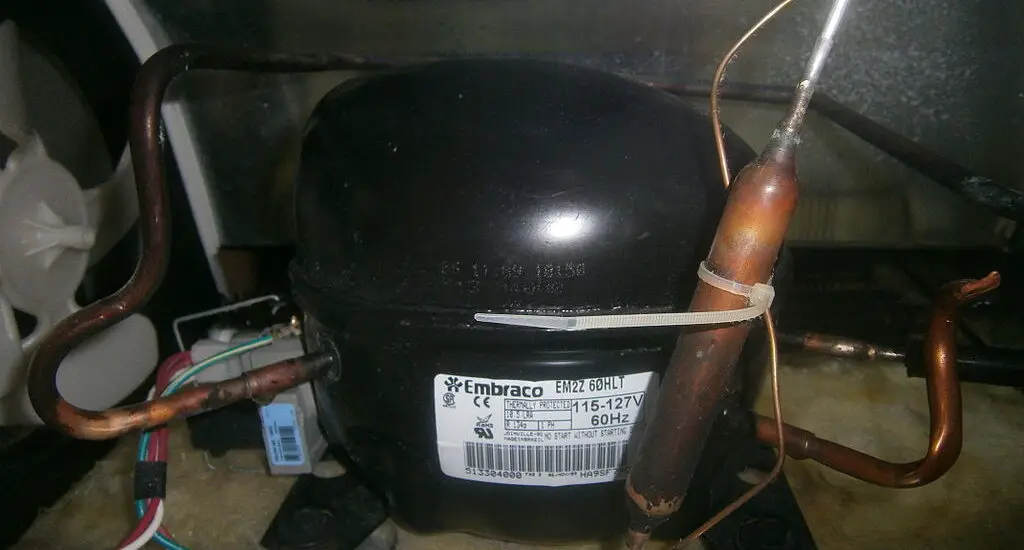If you’re wondering when to replace a refrigerator compressor, this thorough, step-by-step guide will eliminate any guesswork and help you make an informed decision.

Table of Contents
When to Replace a Refrigerator Compressor
Understanding the precise moment to replace your refrigerator compressor involves recognizing various symptoms of failure. Here is an in-depth look at each:
Constant Overheating
The compressor is like the heart of your refrigerator. It should be warm during operation, but never hot. An overheated compressor can be due to internal wear and tear or electrical issues. When it’s too hot to touch, it’s likely failing.
Frequent Cycling
Your refrigerator naturally cycles on and off to maintain the interior temperature. However, frequent or continuous cycling can point to an overworked compressor that’s struggling to maintain temperature. This is not just a sign of inefficiency but also an indicator that the compressor is nearing the end of its useful life.
Ineffective Cooling
When your refrigerator isn’t cooling properly, it’s often due to compressor issues. You can test this by placing a thermometer inside the fridge and freezer. If the temperature is consistently higher than the set temperature for an extended period, your compressor is likely failing.
Unusual Sounds
Noises like clicking or buzzing often accompany a failing compressor. If you hear these sounds coming from the back of your refrigerator where the compressor is usually located, that’s a warning sign.
Confirming the Need for Replacement
Before shelling out money for a new compressor, you should confirm that the compressor is indeed the issue. Follow these comprehensive steps:
Disconnect the Fridge: Safety comes first. Unplug your refrigerator from the power outlet. This prevents any accidental electrical shocks during the inspection process.
Access the Compressor: The compressor is typically located at the back of your refrigerator. You may have to remove a panel or cover to get to it. Use a screwdriver to remove any screws holding the panel in place.
Use a Multimeter: A multimeter is an instrument used to test electrical currents. First, ensure that you’ve read the user manual for both your refrigerator and the multimeter to understand the correct settings.
Attach the multimeter probes to the compressor terminals and read the measurements. Compare these readings with the manufacturer’s specifications, usually found in the appliance’s manual. Deviations from these specifications are a clear sign that your compressor is malfunctioning.
You can get this AstroAI Digital Multimeter from Walmart to test your refrigerator compressor.
Check out these other articles…
Refrigerator Compressor is Warm: 3 Easy Solutions
Refrigerator Compressor Cut Off Time: The Ultimate Guide
Refrigerator Compressor Only Runs for a Few Minutes: Fixed
Refrigerator Compressor Output Pressure: Comprehensive Guide
Is an Inverter Compressor Refrigerator Good? Detailed Answer
Refrigerator Compressor vs Evaporator: Detailed Comparison
Where is Refrigerator Compressor Located? Quick & Easy Guide
Consult a Professional
While you can perform basic tests yourself, it’s best to consult a certified appliance repair technician for a comprehensive diagnosis. They have the tools and expertise to run advanced tests and can offer you an unbiased opinion on whether the compressor should be replaced.
Cost and Replacement Process
The cost of replacing a refrigerator compressor can be a significant investment. The price for a new compressor generally ranges between $200 to $400. Labor can add another $100 to $200 to the total bill. Always ask for an itemized invoice and ensure that the new compressor comes with a warranty for added peace of mind.